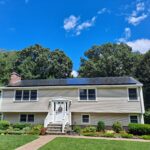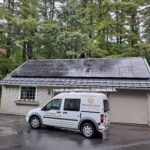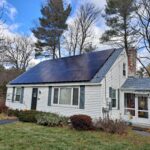If you are making an investment in solar power, most people do it for a combination of the financial and environmental benefits that can be achieved. Is solar bad for the environment? Recently, I think there has been a lot of concern about the manufacturing process of solar panels and other photovoltaic equipment.
Do the benefits of the power generated from solar panels outweigh the negative side effects of the manufacturing process? Let’s first address the positives related to generating solar power. Solar is abundant resource. It is available all over the earth and will not run out for millions of years. With the solar radiation we receive in one year, we can produce about 1,500 times the world’s energy needs. Solar power also does not have to be mined, drilled for, refined, or transported.
The main manufacturing input of PV modules is silicon, one of the most plentiful elements on the planet. It is easily collected from the top of the earth’s crust and is available all over the world, doing away with the need to transport heavy raw materials.
From the first day a solar system is switched on, it will generate clean, green electricity. And, whatever the system produces will reduce its owner’s need to purchase “dirty” electricity. An average 5 kW solar electric system in Massachusetts will generate an equivalent of 10 to 12 barrels of oil each year. This would save about 10,000 pounds of greenhouse gas emissions, which would be comparable to planting 20 mature trees annually or driving your car 7,000 miles less a year.
In terms of negatives, most concern is related to the emissions produced when manufacturing solar equipment. According to NREL (the National Renewable Energy Laboratory), the truth is a solar panel will produce enough clean energy in about four years to offset the energy required to manufacture it. After a solar panel is manufactured and installed, it will be a zero emissions energy source for the rest of its existence (usually 30 years or more). A lot of the negative news you hear about solar is generated from incumbent energy producers. They want us to believe that our current energy infrastructure is the only logical answer. It is not.
Brightstar Solar enables our customers to create their own sustainable solar power safely, dependably, and with an attractive return on investment. Please contact us if you’re interested in a free solar evaluation of your home or business in Massachusetts.








Pingback: Tweets that mention Is Solar Power Bad for the Environment? — BRIGHTSTAR SOLAR -- Topsy.com
My main questions I was looking for were:
How long do these last?
Do they loose efficiency? Half-life of solar panel before it produces 50% of original capable power?
Are these easily recyclable? Any toxic waste by-products?
Any future plans to make solar panels more efficient and more affordable?
Please let me know an answer to all these questions, I really would appreciate it!
Your article helped me a lot, is there any more related content? Thanks!
Thanks for sharing. I read many of your blog posts, cool, your blog is very good.
I don’t think the title of your article matches the content lol. Just kidding, mainly because I had some doubts after reading the article.
Thank you for your sharing. I am worried that I lack creative ideas. It is your article that makes me full of hope. Thank you. But, I have a question, can you help me?
Thank you for your sharing. I am worried that I lack creative ideas. It is your article that makes me full of hope. Thank you. But, I have a question, can you help me?
Can you be more specific about the content of your article? After reading it, I still have some doubts. Hope you can help me.
I don’t think the title of your article matches the content lol. Just kidding, mainly because I had some doubts after reading the article.
I don’t think the title of your article matches the content lol. Just kidding, mainly because I had some doubts after reading the article. https://www.binance.com/zh-CN/join?ref=VDVEQ78S